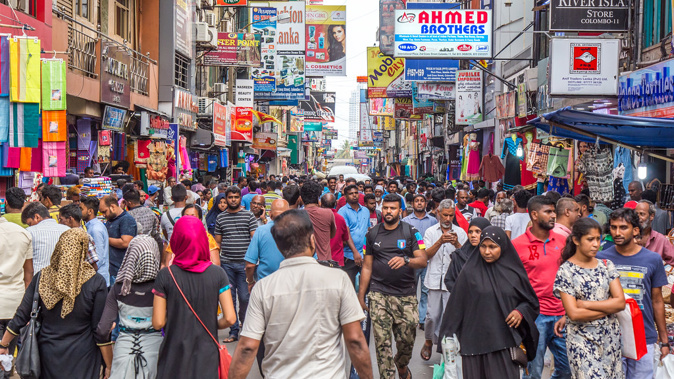
Sri Lanka has loomed large on my bucket-list for quite some time. Nicknamed the Pearl of the Indian Ocean, I’ve just ventured to the teardrop-shaped island nation for the first time and it smashed my expectations. Over the course of a week, I savoured Sri Lanka’s colourful cities, vibrant cuisine, ravishing landscapes, astonishing World Heritage treasures and glorious wildlife, which were all seamlessly stitched together by On the Go Tours and their Colombo, Caves and Kandy group tour. I joined a small group of 10 fellow travellers from Australia and Britain, adeptly led by Manoj, our delightfully engaging guide, and unflappable driver, Upool. On the Go Tours operate a variety of well-priced Sri Lanka touring options year-round, delivered with authenticity, comfort and style. It was a pleasure to experience their highly enjoyable and enriching brand of hospitality. www.onthegotours.com
It’s remarkable how much you can soon learn about a country in a matter of days, when you have a captivating and outgoing in-the-know guide. Manoj shared so many insights into Sri Lanka’s enormous indebtedness to China, its recent economic crisis and shamelessly corrupt government, which pleasingly, has just been voted out of office. Sri Lanka is bouncing back from bankruptcy, and it was so reaffirming to see tourism on the rebound, too. Starting and ending in Colombo, the Sri Lankan capital is remarkably cleaner than India’s big cities. That was the first of many Sri Lankan surprises – the noticeable lack of street litter. Ditto for the lack of Indian-style crowd crush, although the nation is only half the size of the North Island with four times our population.
Lying on the country’s west coast, edged by the Laccadive Sea, new world glam and storied tradition jostle for attention in Colombo, soundtracked by tuk tuk traffic and scented by fiery, flavoursome food. Architecturally, the city has some soaring headliners, crowned by the epic Lotus Tower. Over 350 metres in height, the Lotus Tower is the tallest freestanding structure in South Asia – and taller than Auckland’s Sky Tower. Opened just two years ago, head to the observation deck at golden hour to watch the setting sun gild the city in its molten glow before sinking into the Indian Ocean. After dark, the shapely tower and its bulbous top turns on a spangled multi-coloured light show, that can be seen all over the city.
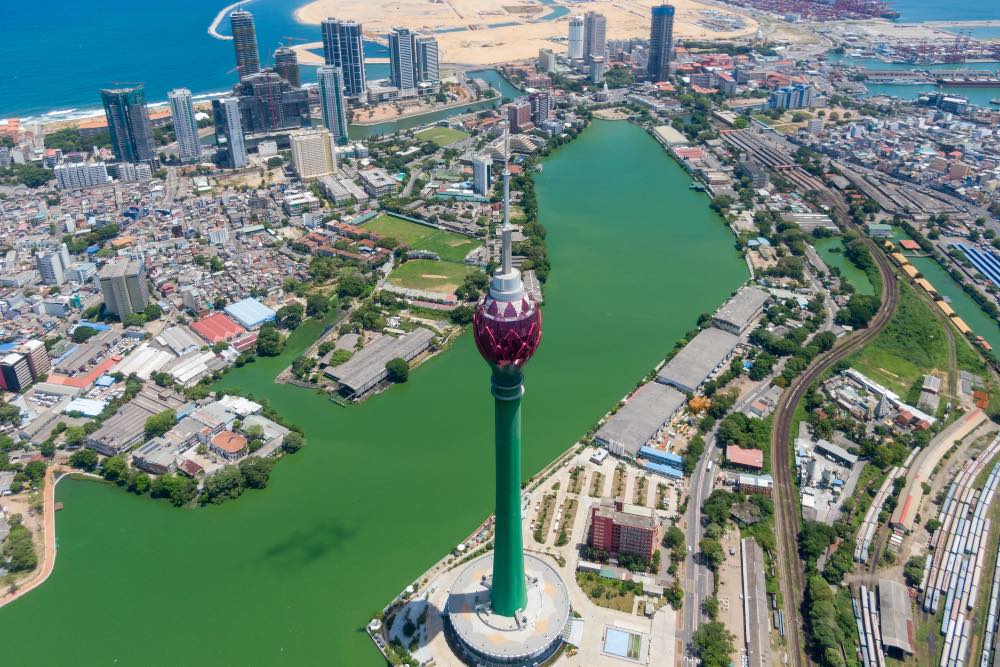 The Lotus Tower overlooking Colombo. Photo / Supplied
The Lotus Tower overlooking Colombo. Photo / Supplied
Nearby, Gangaramaya Temple is full Buddhist bling – 72% of the population is Buddhist. The temple's eclectic architecture draws inspiration from Sri Lankan, Thai, Indian, and Chinese design elements. Devotees clad in white attire passed through the sanctuary, offering colourful lotuses to the Buddha before lighting oil lamps and joss sticks in the courtyard. The courtyard features a distinctive stepped wall adorned with stone statues of the Buddha and stupas, serving up a tranquil setting for contemplation.
Colombo has a very green heart, with a high concentration of perfectly manicured cricket grounds and hundreds of immense banyan and ficus trees. In the heart of town, we marvelled over a stash of heritage buildings and colonial vestiges - stone sirens to the respective eras of Portuguese, Dutch and British rule. One of the city’s most interesting shrines is the 200-year-old St Anthony’s Church. Heaving queues of devotees from all faiths, line up to pray before a statue of the saint that was spirited to Colombo from Goa and said to be endowed with miraculous qualities.
Tragically, on Easter Sunday 2019, the church was targeted in an ISIS terrorist bombing, killing 93 worshippers, after the government failed to act on intelligence warnings. Nearby, the striking Jami Ul-Alfar Masjid is one of the oldest mosques in Colombo. Situated in the buzzing shopping district of Pettah, this architectural showstopper is defined by its vivid candy-striped minarets and ornate arabesque interiors. It’s jaw-droppingly gorgeous.
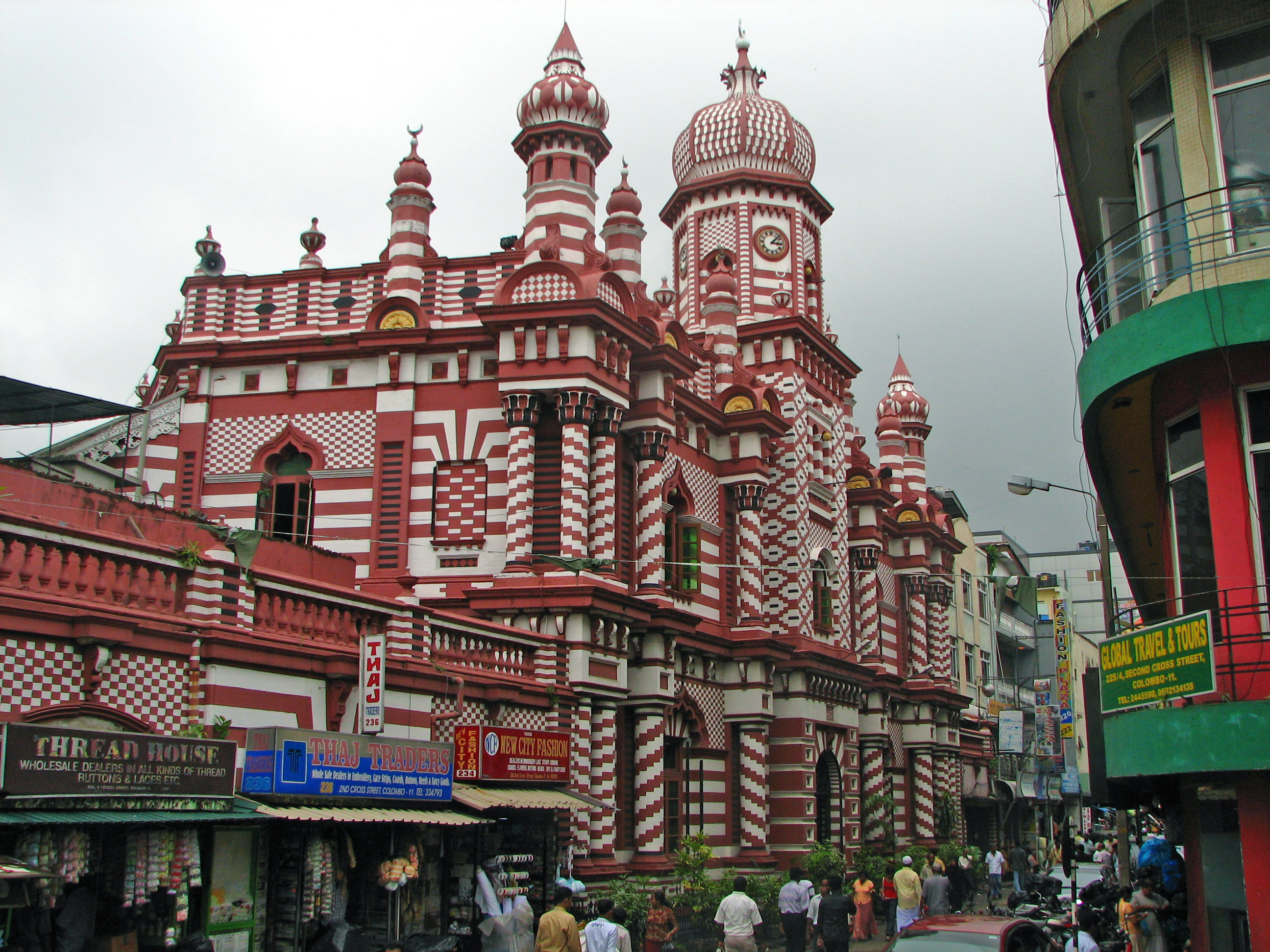 Jami Ul-Alfar Mosque. Photo / Supplied
Jami Ul-Alfar Mosque. Photo / Supplied
Do not leave Colombo without eating Sri Lanka’s famous lagoon crabs at Ministry of Crab, in the Old Dutch Hospital. This terracotta-tiled heritage structure dates from the 17th century, when Colombo Fort was first established by the Portuguese, before the Dutch captured the city in 1656. The hospital attended to staff of the Dutch East India Company. Fast forward to today, and it’s now a trendy hospitality hub. Ranging from 500g to 2kg ‘crabzillas’ these lip-smacking crustaceans are smothered in pepper or chilli and garlic sauce. This is one messy dish, so bibs are advised and be prepared to get your hands dirty.
Fringing the Indian Ocean, Galle Face Green has been used as a cultural gathering point since its inception by the Dutch, which they initially developed to give their cannons a clear line of fire. With a meandering beachfront promenade, the Night Market is the go-to spot for some local Sinhalese street food. At around 5pm, locals flock to the area for a spot of beachside cricket, while food vendors start rolling out their carts. Not sure what to order? Start with a classic kottu roti – a flavourful plate of chopped roti with curried chicken, which you eat with your hands. Delicious. Try Isso vade, a lentil fritter topped with spicy prawns.
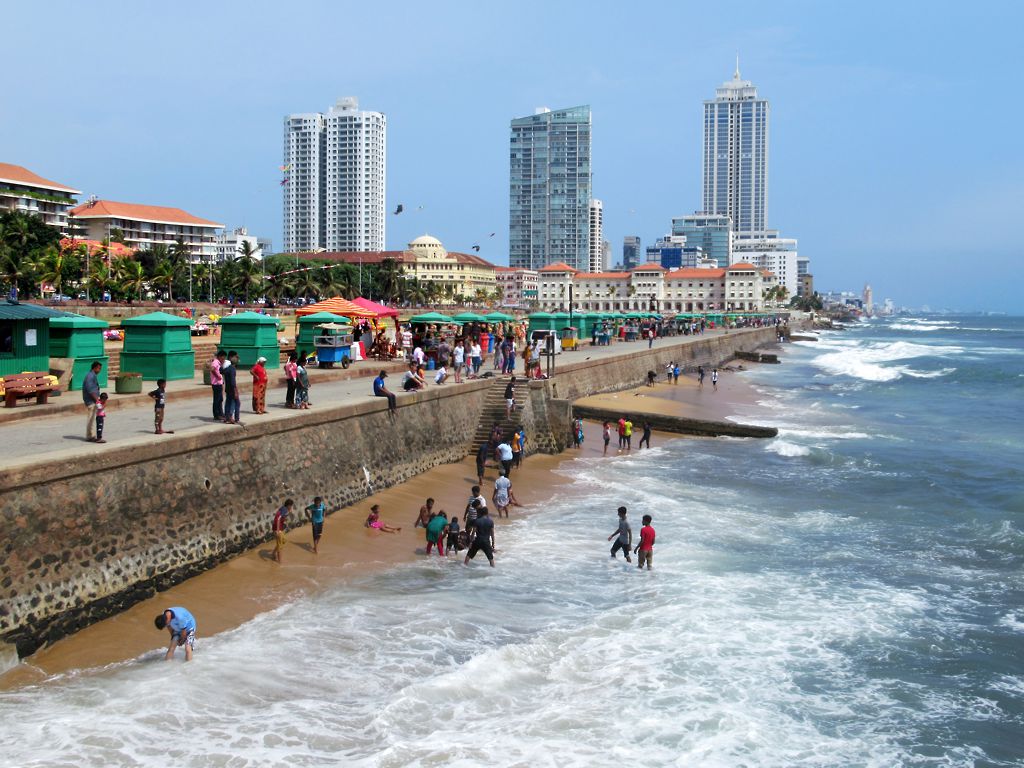 Galle Face Green. Photo / Supplied
Galle Face Green. Photo / Supplied
Whatever the time of day, chow down on some string hoppers. These rice-flour steamed noodles are served with coconut milk gravy and pol sambol, which is a combination of freshly grated coconut, shallots, chilli, lime juice and salt. Sambol seems to make its way into many Sri Lankan dishes, it’s a sure-fire staple. Speaking of hoppers, for breakfast, Sri Lanka’s traditional breakfast hoppers, are a rice-flour pancake shaped like a bowl. Spicy curry and a cracked egg are served inside the pancake bowl. Fabulous! Wash it all down with some fresh coconut and lime juice. You can’t go wrong.
With the Black Caps on tour, I was particularly excited about sampling Colombo’s southern neighbour, Galle. The cricket was diabolical, with the Kiwis wilting in the steamy heat. But Galle International Stadium is a stirring sight, situated near Galle Fort and fringed on two sides by the Indian Ocean. It was a thrill to watch the cricket from the fort ramparts. The 2004 Boxing Day Tsunami which killed 30,000 Sri Lankans, devastated the venue, with the water rising 30 metres and destroying the facilities. Shane Warne, who achieved his 500th test wicket at Galle a year earlier, was particularly instrumental in raising funds for the venue’s rebuild and reconstruction assistance for Galle’s residents. He is still considered a God in Galle.
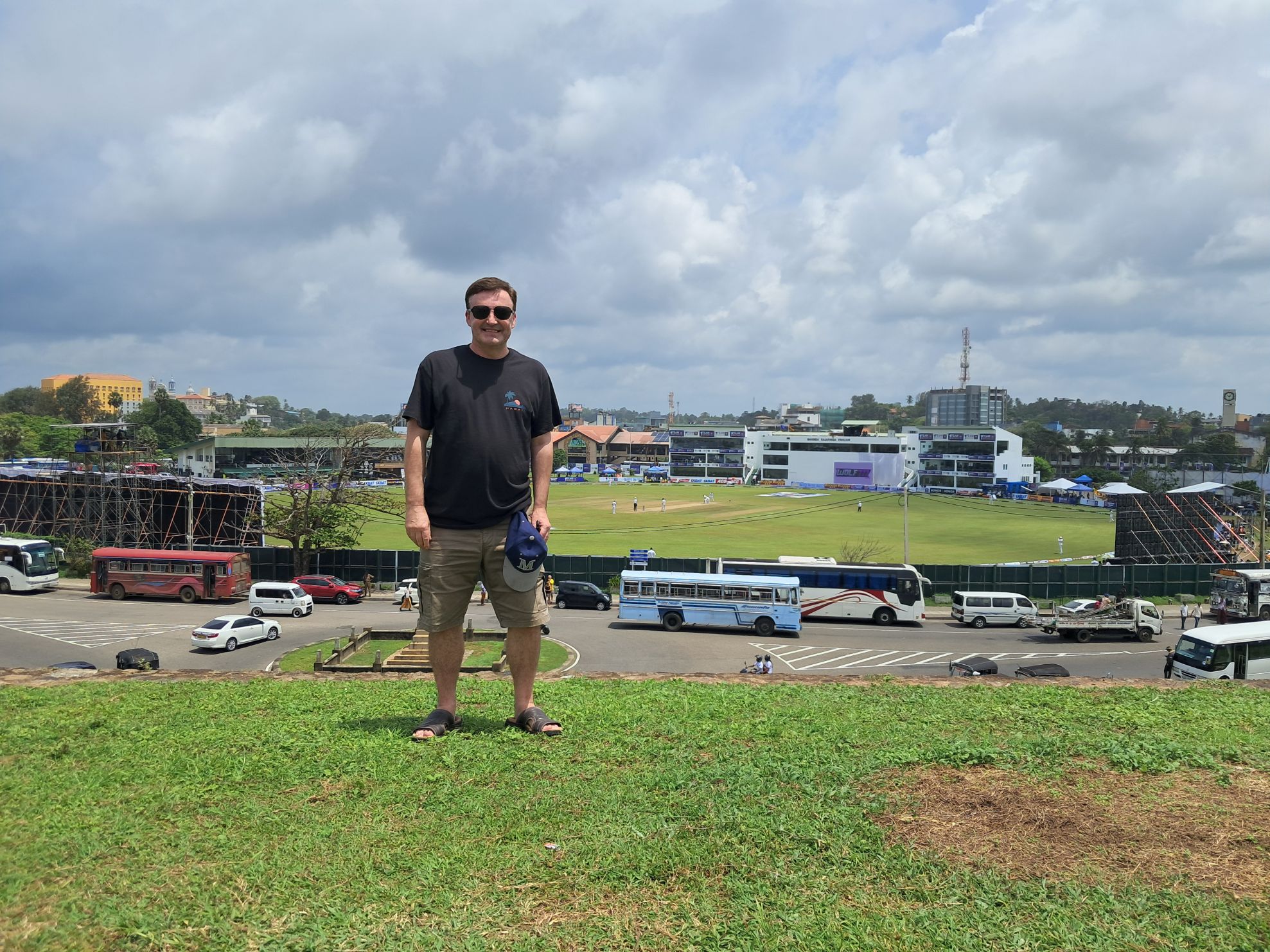 Mike at the cricket in Galle. Photo / Mike Yardley
Mike at the cricket in Galle. Photo / Mike Yardley
Galle is a jewel of a coastal town. In the 18th century, the Dutch built their headquarters, Galle Fort, taking over from two-centuries of Portuguese rule. Much of fort was constructed from mining the reef just offshore. You can still see shells in the rock. Flag Rock, at the southernmost end of the Fort, was once a Portuguese bastion. Today, it’s a wildly popular place to catch an intense Indian Ocean sunset. Daredevil locals love leaping into the water from these rocks, while a swathe of vendors sell good street food such as fresh papaya with chilli powder from their carts. Try it!
After fortifying Galle with a walled old town, the Dutch left behind a vast legacy of white-washed buildings and terracotta-rooftops, which the British left relatively untouched. As we strolled the ramparts, our group chuckled over the soaring British Clocktower, looking somewhat out of place, jutting out from the wall. What do you do if you are British – and fresh in town? You make your mark by building a clocktower. More famously, they also built the lofty creamy-white Galle Fort Lighthouse, a poster child for this charming town.
Bracketed by swaying palm trees and deep blue ocean, it’s still fully operating, nearly two centuries later. It takes two hours to walk around the entire fort, which enjoys UNESCO-protection. This endlessly exotic old trading port is blessed with grand and graceful colonial architecture, elaborately designed mosques and churches and venerable old mansions. Strolling its serene and rambling lanes you'll pass stylish cafes, artsy boutiques worth a poke around, and immaculately restored hotels, many of which are owned by local and foreign artists. The beach scene is sweetly seductive, particularly Jungle Beach and banana-shaped Unawatuna Beach, where the soft blonde sands and crystal-clear waters always pull a crowd. Galle will charm your pants off.
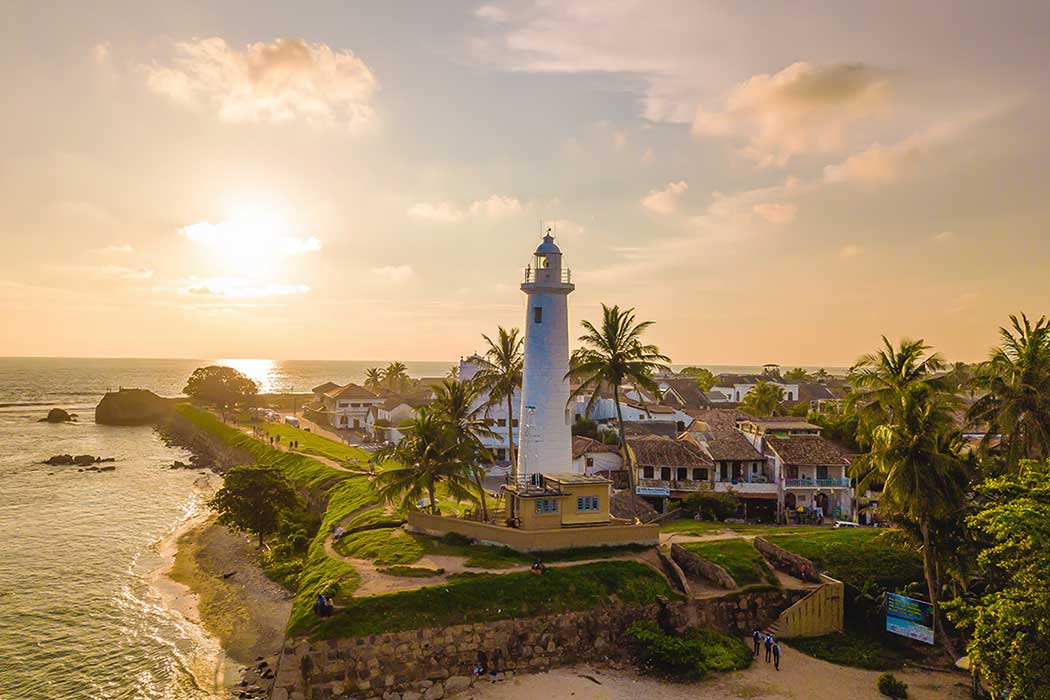 Galle Fort and Lighthouse. Photo / Supplied
Galle Fort and Lighthouse. Photo / Supplied
From New Zealand, it’s just a one-stop connection to Colombo with Singapore Airlines, on their daily services from Auckland and Christchurch to Singapore. Across all classes of travel, the award-winning carrier has not only fostered a world-beating reputation for its exceptional customer service and in-flight product, but also its innovation. Become a KrisFlyer member and enjoy complimentary in-flight WiFi. For best fares and seats to suit head to https://www.singaporeair.com
Mike Yardley is our resident traveller on Jack Tame Saturday Mornings.
Take your Radio, Podcasts and Music with you









